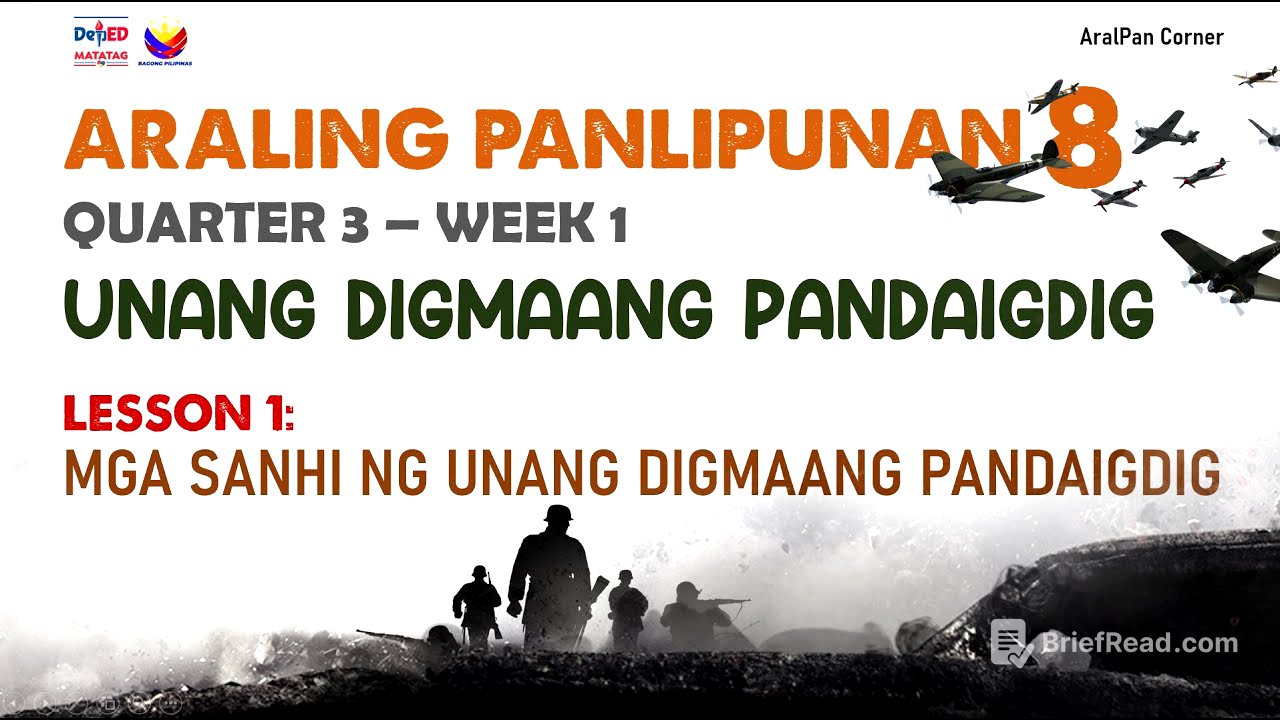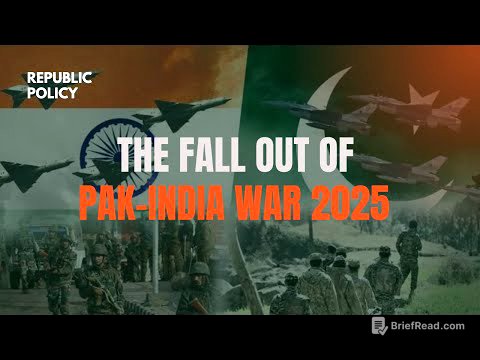TLDR;
This video provides an overview of the First World War, covering its causes, key players, and significant events. It identifies the main alliances, the rise of nationalism, imperialism, and militarism as contributing factors, and discusses the involvement of Belgium and Switzerland. The video concludes by summarizing the war's impact on European politics, economics, and society, noting the emergence of new nations and ideologies.
- The war involved the Triple Alliance (Germany, Italy, Austria-Hungary) and the Triple Entente (France, Great Britain, Russia).
- Nationalism, imperialism, and militarism were key causes.
- Belgium was occupied by Germany, while Switzerland remained neutral.
- The war led to significant changes in European politics, economics, and society.
Introduction to World War I [0:06]
The video introduces Social Studies 8, quarter 3, week 1, focusing on the First World War. The lesson will discuss the causes, events, and changes brought about by the war, which lasted from 1914 to 1918. The purpose is to identify the causes, effects, and implications of the events during the war and to justify the response of countries to various problems after the war, as well as to deduce the implications of the changes brought about by the conflict.
Key Players and Alliances [1:01]
The global war that took place in 1914 primarily involved European countries. The conflict began between two main alliances: the Triple Alliance and the Triple Entente. The Triple Alliance consisted of Germany, Italy, and Austria-Hungary, while the Triple Entente was made up of France, Great Britain, and Russia. By 1917, the United States had joined the Entente.
Fall of Dynasties [2:09]
The important event was the fall of the four great dynasties: Hohenzollern, Romanov and Habsburg Families.
Causes of World War I: Nationalism [2:31]
Nationalism, the desire for a country's independence, is identified as a significant cause of the war. It can lead to over-love or fanaticism, as exemplified by the Junkers in Germany.
Causes of World War I: Imperialism [2:54]
Imperialism, the conquest of colonies and expansion of power, is another cause. Disputes between countries over the control of resources contributed to the tensions leading to war.
Causes of World War I: Militarism [3:10]
Militarism, the strengthening of the army and production of weapons, is also highlighted. The naval rivalry between Germany and Great Britain is given as a specific example.
The Role of Alliances [3:25]
Alliances, the taking of sides by countries based on interests, caused the war to spread across the continent. The Triple Entente (France, Great Britain, Russia) agreed to help each other if attacked. The Triple Alliance (Germany, Italy, Austria-Hungary) was founded by Otto Von Bismarck in 1882, establishing an agreement for cooperation in times of war.
Belgian Involvement [4:08]
Germany occupied Belgium, a neutral country, using it as a passage to invade France. German and French armies, along with British and 2,000 Belgian soldiers, fought. Germany ultimately conquered Belgium.
Switzerland's Neutrality [4:34]
Switzerland remained neutral during the First World War due to its strong army, which deterred Hitler from conquering it. It became a repository of wealth from conquered countries.
Summary of World War I [4:54]
World War I is summarized as a battle of power, alliance, and ideology. The war changed the face of European politics, economics, and society, paving the way for the emergence of new nations and ideologies.

![Digimon: The Movies | Teaser trailer (Movie Collection 1) [Discotek Media]](https://wm-img.halpindev.com/p-briefread_c-10_b-10/urlb/aHR0cDovL2ltZy55b3V0dWJlLmNvbS92aS9ReGV2NUhEX1pRRS9ocWRlZmF1bHQuanBn.jpg)







